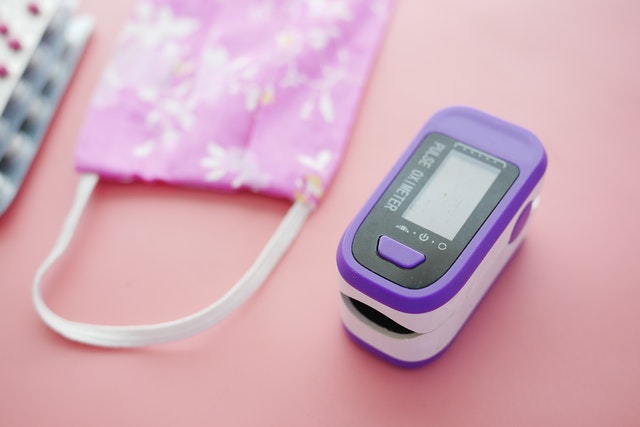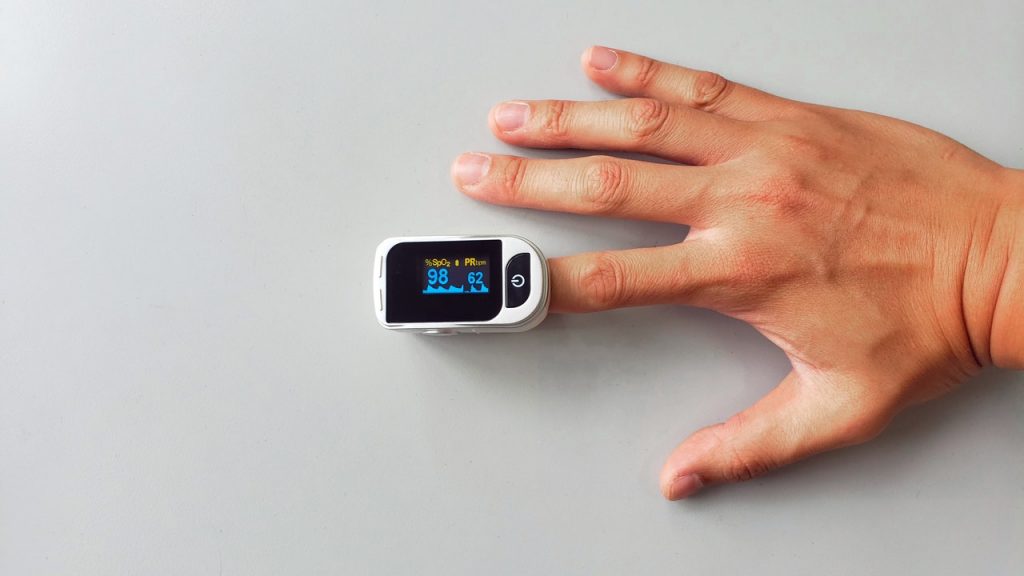
Pulse oximetry is a test, also known as pulse oximetry, used to measure the oxygen levels in the blood. It is an indirect way of measuring the oxygen saturation (SaO2) of hemoglobin.
A pulse oximeter is a type of medical device that measures the oxygen saturation of hemoglobin in the blood. It consists of a non-invasive sensor that attaches to an index finger or earlobe, which detects the presence of oxygen in the bloodstream.
It is also known as pulse oximeter, pulse oxymetry, or just oximetry.
Why might I need pulse oximetry?
 Pulse oximetry is a test to measure the level of oxygen in your blood and the amount of oxygen you are getting from breathing.
Pulse oximetry is a test to measure the level of oxygen in your blood and the amount of oxygen you are getting from breathing.
The pulse oximeter calculates the percentage of oxygen in your blood by measuring how much light is absorbed by your red blood cells and then compares that to how much light is scattered back into the sensor. The number of red blood cells in your bloodstream will affect how well it can measure the oxygen saturation of hemoglobin in your red blood cells.
Pulse oximeters can be used for people who have lung or respiratory problems, for people who need surgery and other procedures where they need to be monitored closely, and for athletes and dancers so they can assess their performance levels.
This article provides information on why you might need pulse oximetry.
What are the risks of pulse oximetry?
 Pulse oximetry is often used instead of an arterial blood gas test for determining how well the lungs are oxygenating the blood.
Pulse oximetry is often used instead of an arterial blood gas test for determining how well the lungs are oxygenating the blood.
As each pulse oximeter sensor is developed to optimize accuracy in a different way, it is difficult to determine which sensor is the best. Pulse oximeters should be calibrated periodically to ensure accuracy.
The risks of pulse oximetry can be seen as either false positives or false negatives. False positives may occur when the sensor incorrectly identifies low oxygen saturation levels as normal, or when it reports high oxygen saturation levels as low.
False negatives may occur when the sensor fails to detect low oxygen saturation levels, or when it reports falsely high readings of these levels.
- Incorrect reading if the probe falls off the earlobe, toe, or finger.
- Skin irritation from adhesive on the probe is
How do I get ready for pulse oximetry?
 Pulse oximetry is a non-invasive, painless medical test used to measure the proportion of oxygen in the blood. It is used to identify oxygen-related problems, such as sleep apnea or high blood pressure. There are no special preparation steps but some people may need to remove any jewelry before the test.
Pulse oximetry is a non-invasive, painless medical test used to measure the proportion of oxygen in the blood. It is used to identify oxygen-related problems, such as sleep apnea or high blood pressure. There are no special preparation steps but some people may need to remove any jewelry before the test.
A pulse oximeter has two small sensors that are placed on an individual’s fingertip or earlobe for 10 seconds. This tells you your heart rate and your SpO2, which is the percentage of oxygen in your hemoglobin (red blood cells).
What happens during pulse oximetry?
 You may have your procedure as an outpatient. This means you will go home the same day instead of staying overnight in hospital. Pulse oximeters are often used as part (either for a long- or briefer-than-usual stay) of an overnight stay at the hospital. It may be done with either finger, ear, or forehead sensors. The way it’s done depends on your condition and the techniques employed by your healthcare providers.
You may have your procedure as an outpatient. This means you will go home the same day instead of staying overnight in hospital. Pulse oximeters are often used as part (either for a long- or briefer-than-usual stay) of an overnight stay at the hospital. It may be done with either finger, ear, or forehead sensors. The way it’s done depends on your condition and the techniques employed by your healthcare providers.
Some procedures involve pulse oximetry:
-
You will receive a clip-like device or sticky probe. This device will be attached either to your finger, earlobe or forehead.
-
The probe is made to stay on for ongoing monitoring.
-
The probe, which is the sensor that measures coronary arteries, will be used for a specific reading. After it’s done being used for measurements, it is taken out of the body.

